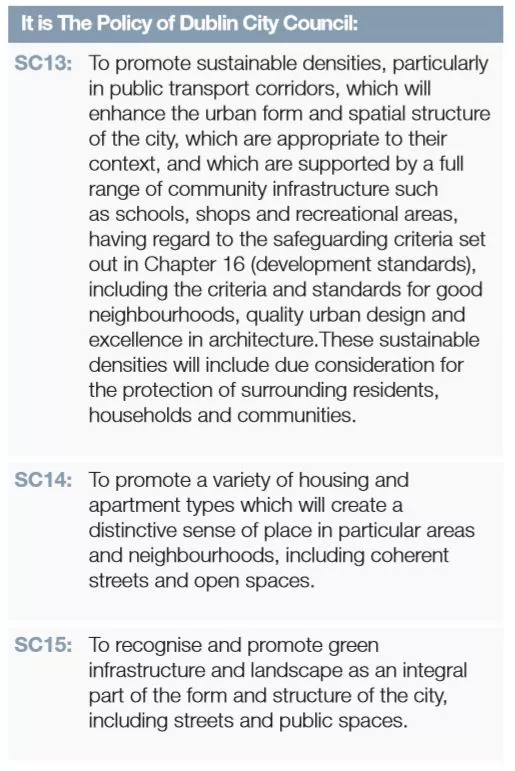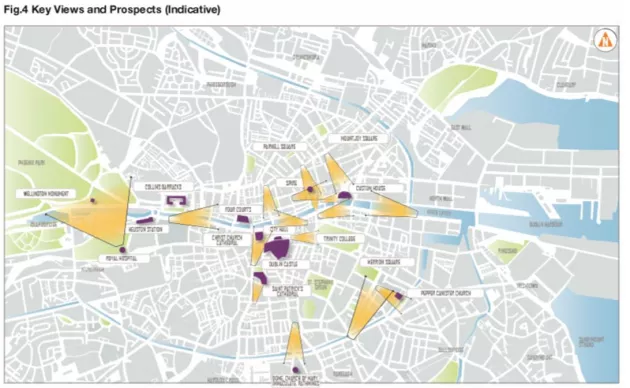4.5.3.1 Urban Density
4.5.3.1 Urban Density
Urban Density
The National Spatial Strategy 2002 – 2022 recognises that the physical consolidation of Dublin, supported by effective land use policies for the urban area itself, is an essential requirement for a competitive Dublin, and that consolidation is also required for the public transport system to function effectively.
Similarly, the Regional Planning Guidelines for the Greater Dublin Area 2010 – 2022 recognise that land-use and transport are critical inter-linked policy tools that need to work together to better realise economic success, environmental protection and quality of life. Good quality, higher density developments such as those at Heuston South Quarter and Clancy Quay within the inner city, and Seascape in Clontarf (in the outer city) can make a positive contribution to the evolving urban form and structure of the city.
Intensive mixed-use developments on welllocated urban sites, including smaller infill sites such as that at 50-58 Percy Place, Dublin 4, can help to achieve sustainable land use and movement patterns.
This plan will continue to physically consolidate the city and to optimise the efficient use of urban land. This will minimise wastage of scarce urban land, reduce urban sprawl and provide for a compact city with attractive mixed-use neighbourhoods, a variety of housing types and tenure, and adaptable housing, where people of all ages will choose to live as a matter of choice.
Higher densities will be promoted in the city centre, within KDCs, SDRAs and within the catchment of high capacity public transport. The density standards set out in this plan will promote the development of high quality, sustainable densities and the consolidation of urban form. This approach is consistent with, and has been informed by, Guidelines for Planning Authorities on Sustainable Urban Development (Cities, Towns and Villages), (Department of Environment, Heritage and Local Government, 2009), and its companion document, Urban Design Manual: A Best Practice Guide.
There are a number of inter-linked sustainable standards and safeguards throughout the Development Plan, all designed to ensure that quality density is delivered through a variety of mechanisms such as contextual streetscapes, urban form, stepped heights in transitional zones, together with open space standards and amenity standards.
The green infrastructure network provides for quality recreational, biodiversity and carbon and water soakage areas as an integral part of the city form and structure (See Chapter 10).

